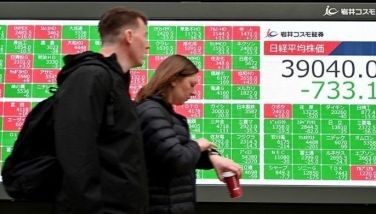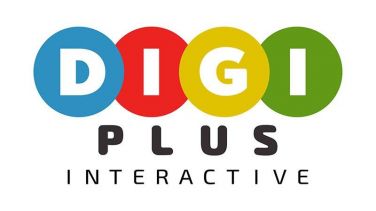War vs hunger

One of the government’s less publicized and controversial programs is the drive against hunger. As defined by the Food and Agriculture Organization, hunger is a form of food insecurity where people do not get enough food to be able to lead productive lives.
In the country, an accepted indicator of hunger is a survey regularly conducted by the Social Weather Station where respondents answer a survey question that probes about hunger due to a lack of anything to eat. The most recent was conducted from December 5-10, 2009.
According to the SWS, the proportion of families experiencing involuntary hunger at least once in the past three months reached a new record-high of 24 percent, or an estimated 4.4 million households. This is one of four Filipino families.
This hunger rate surpassed the previous record-high incidence of 23.7 percent in December 2008. This is not surprising since the economy itself was under siege in 2009 not only in reaction to the global crisis of previous years, but also from natural calamities such as those memorable super typhoons during the second half of the year.
A high hunger measurement is a serious indicator that any responsible government needs to focus on, and while the Philippines’ is not as critical as that of Kenya or even Haiti after its killer earthquake experience, it is a warning of possible big time malnutrition problems and perhaps even of political unrest.
Programs in place
Not surprisingly, the Philippine government has a drive against hunger which is imbedded in medium-term country development plan. To put teeth in this campaign, the President authorized the release of P1 billion for the immediate implementation of various anti-hunger projects.
The lead state institutions and agencies supervising this hunger mitigation program are the Department of Health (DOH), through the National Nutrition Council, and the Department of Social Welfare and Development.
By our government’s logic thinking, Filipinos go hungry either because they do not have enough food to eat or they do not have the money to buy it.
In response, it initially came up with a Hunger Mitigation Program, but with the continuing rise in hunger incidence, the program was renamed Accelerated Hunger Mitigation Program.
The initial program had two components, a food-for-school program involving the provision of one kilo of iron-fortified rice daily for 120 days to families that suffer from severe hunger, and a Tindahan Natin, which basically makes available lower priced basic commodities to poor families.
Aside from the daily rice ration and the “tindahan” project selling low-priced but good quality rice and noodles, there is also the Gulayan ng Masa, or backyard gardening, as well as the Barangay Food Terminal program of the Department of Agriculture – both of which aim to provide alternative food sources.
Supply and demand sides
In the stepped-up version, program implementation was divided to two parts of a “holistic” whole: supply and demand. On the supply side, measures include production of more food and efficient delivery to those who need it. This will be done through the Department of Agriculture and the Department of Environment and Natural Resources.
On the demand side, measures include putting more money in people’s pockets, promoting good nutrition and managing population levels. Emphasis is on the first component though, taking off from the government’s pump-priming strategies.
For instance, the Department of Public Works and Highways is accelerating its emergency public work and food for work programs, the former being a nationwide campaign where workers from poor areas are hired to clean and maintain the country’s roads and highways.
The DSWD also maintains a self-employment assistance program where accredited associations are given seed capital worth P1.2 billion to finance micro- and small-scale livelihood programs. The government’s support of micro, small and medium enterprises is also aimed at promoting job creation.
Nutrition and responsible parenthood
In the area of nutrition, the DOH and the National Nutrition Center have embarked on an information and advocacy program, including the development, printing and dissemination of nutrition-related communication materials.
The DOH, in partnership with local government units, has also been promoting responsible parenthood to encourage family planning. Population advocates will be pleased to hear that the use of modern contraceptive methods has increased to 36 percent in 2006 from 35.1 percent the previous year.
Moreover, the Philippine Responsible Parenthood Program (PRPP) was revised to highlight natural family planning, breastfeeding and birth spacing to aid the government’s population program.
Priority areas
In terms of prioritization, provinces that are food-poor are given first crack at availing of support from the various hunger mitigation components. According to the government’s surveys, there are 11 provinces including Metro Manila where food availability is scarce.
Given this direction towards the creation of local anti-hunger task forces and focusing resources on selected priority areas, the government hopes that the necessary momentum will be achieved to drastically win its war against hunger.
Impressive in form
A review of the programs as described in communication materials released by the government agencies involved gives one the impression that a lot of thinking went into developing and describing the structure of the plans and programs.
The question, however, remains on the effectiveness of the implementation and monitoring of the results of these programs and activities.
Will these cohesive and integrated programs achieve the objective of cutting hunger incidence by half from 2006 levels, and to make the country compliant to hunger and poverty targets as per the Millennium Development Goals by 2015?
Should you wish to share any insights, write me at Link Edge, 25th Floor, 139 Corporate Center, Valero Street, Salcedo Village, 1227 Makati City. Or e-mail me at [email protected]. For a compilation of previous articles, visit www.BizlinksPhilippines.net.
- Latest
- Trending

























